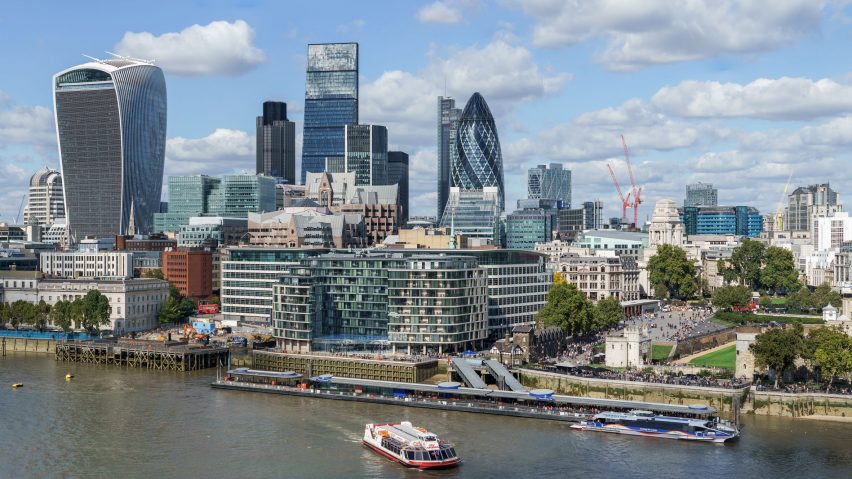
London's "undervalued" architecture sector worth £1.7 billion to UK economy
Politicians have failed to grasp the value of London's booming architecture industry, which is worth more than the city's industrial design, graphics and fashion sectors combined and growing almost twice as fast, according to a new report by the mayor's office.
The London's Architectural Sector report states the city's architecture industry is worth £1.7 billion and growing at 7.6 per cent per year.
This rate of growth significantly outstrips the creative industries as a whole, which is growing at 3.9 per cent per annum, and London's entire economy, which is expanding at three per cent.
"The value of architecture in London may be undervalued by creative policy makers," says the report. "The sector is 38 per cent bigger than the product, graphic and fashion design sectors."
The research was carried out by the London mayor's economics team, in partnership with the London Festival of Architecture (LFA).
According to LFA director Tamsie Thomson, it shows the importance of ensuring London's architects continue to thrive after Brexit – when access to foreign talent and international projects may be challenged.
"We cannot take the success of London's architecture sector for granted," she said. "Our research shows that this success – including booming exports – is driven by a diverse workforce from all over the world."
She has called for the UK government to consider these statistics when negotiating its exit from the European Union.
"We look to the government to negotiate responsible post-Brexit trade deals if London is to remain the world's architectural hub."
The 56-page report provides a detailed overview of London's architecture sector and its economic contribution, including business output, employment, students and architectural tourism.
The report found that:
The report assesses London's architecture sector in terms of gross value added (GVA) – a measure of the worth of goods and services produced – rather than just the revenue it generates.
This gives the sector a far bigger valuation than other methods, leading the authors to conclude that the industry may have been undervalued by policymakers in the past.
The research also found that London contributed over 42 per cent of the UK's architecture GVA in 2015, a proportion that has been steadily rising for the past six years.
This suggests that the capital is of greater importance to architecture than for other creative sectors.
"London is home to some of the world's best architects and this research underlines the important role they can play in the city's economy," said Jules Pipe, deputy mayor for planning, regeneration and skills.
"It's only right that, as well as celebrating the aesthetics and social benefit of great design, we also recognise its financial contribution to the capital," he added. "This is yet more evidence that London is open for business and open to the best and brightest architectural talent from around the world."
A report last year revealed that creative industries in the UK are worth £84.1 billion per year to the country's economy.
Since Britain voted to leave the EU in June 2016, architects and designers have been vocal about the disastrous effect Brexit could have on the creative sector – with hundreds lending their names to Dezeen's Brexit Design Manifesto.
The UK government has claimed it will make the creative sector a priority in its industrial strategy, while UK culture minister Matt Hancock has described the architecture and design sector as "vitally important to our future as an outward looking, creative nation".
In line with this ambition to present a positive vision of the post-Brexit UK to the world, Dezeen has launched an ideas competition to redesign the UK passport.
Dezeen's Brexit passport design competition is free to enter and has a top prize of £1,000. Closing date is 24 March 2017. More details at www.dezeen.com/passport